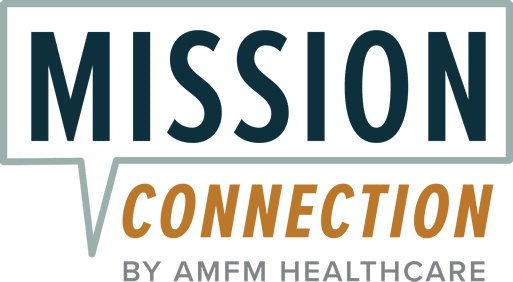What is PTSD Treatment?
A mental health disorder known as post-traumatic stress disorder (PTSD) may arise from experiencing or witnessing a traumatic event. Natural disasters, war, sexual assault, and serious accidents are a few examples of these occurrences. PTSD can result in excruciating anxiety, nightmares, flashbacks, and terror. This article will explore the available treatment for PTSD, discuss whether there is a cure, and provide a clear understanding of what individuals with PTSD can expect.
Understanding PTSD
Prior to beginning treatment, it’s critical to comprehend the symptoms of PTSD. PTSD is not just a case of forgetfulness. It can interfere with all facets of a person’s life and make getting by on a daily basis challenging. PTSD symptoms typically fit into one of four categories:
- Negative changes in thinking and mood
- Intrusive memories
- Avoidance
- Changes in physical and emotional reactions
The experience of PTSD varies from person to person, as does the intensity of symptoms.
Traditional Treatment for PTSD
The treatment for PTSD typically involves a combination of therapy and medication. The goal of these treatments is to reduce symptoms, improve daily functioning, and help the individual cope with the trauma.
1. Psychotherapy
- Cognitive Behavioral Therapy (CBT): This is one of the most effective treatments for PTSD. CBT helps individuals recognize and change negative thought patterns and behaviors. Trauma-focused CBT specifically addresses memories of the traumatic event and their impact on the individual.
- Exposure Therapy: This form of CBT involves gradually exposing patients to thoughts, feelings, and situations they have avoided. The idea is to help them face their fears in a controlled and safe environment, reducing the power these triggers have over them.
- Eye Movement Desensitization and Reprocessing (EMDR): EMDR is another effective treatment for PTSD. It involves processing trauma memories while focusing on a specific visual or auditory stimulus. The goal is to help the brain reprocess the trauma so it is no longer distressing.
2. Medications
- Antidepressants: Selective serotonin reuptake inhibitors (SSRIs) like sertraline (Zoloft) and paroxetine (Paxil) are commonly prescribed to help manage PTSD symptoms. They can reduce anxiety, improve sleep, and enhance mood.
- Prazosin: This medication is often prescribed to reduce nightmares associated with PTSD. It helps by blocking adrenaline’s effects, which can reduce the intensity and frequency of nightmares.
- MDMA-Assisted Therapy: Recent studies have shown promising results for MDMA (commonly known as ecstasy) when used in combination with psychotherapy. Research indicates that MDMA can help reduce fear responses and make it easier for patients to engage in therapy, leading to significant reductions in PTSD symptoms.
Emerging and Alternative Treatment for PTSD
In addition to traditional therapies, there are emerging treatments that show promise in treating PTSD.
1. MDMA-Assisted Therapy
Recent research has highlighted the potential of MDMA-assisted therapy as a powerful treatment for PTSD. In clinical studies, MDMA, combined with psychotherapy, has been shown to reduce symptoms significantly.
For example, a study found that 86.5% of participants who received MDMA-assisted therapy experienced a clinically meaningful reduction in PTSD symptoms, with many no longer meeting the criteria for PTSD after the treatment course. This therapy is still under investigation, but it offers hope for individuals who have not responded to traditional treatments.
2. Ketamine Therapy
Ketamine, traditionally used as an anesthetic, has shown potential in treating PTSD when administered in low doses. Research suggests that ketamine can rapidly reduce symptoms of depression and PTSD. While the long-term effects and safety of ketamine treatment are still being studied, it represents a promising option, especially for those who have not benefited from other treatments.
3. Virtual Reality Exposure Therapy (VRET)
Virtual Reality Exposure Therapy is a new approach where patients are immersed in a virtual environment that simulates their traumatic experience. This controlled exposure can help them process their trauma more effectively. While still in the early stages of research, VRET has shown promising results in treating PTSD, particularly among veterans and first responders.
Is There a Cure for PTSD?
The question of whether there is a cure for PTSD is complex. While many treatments can significantly reduce or even eliminate symptoms, no guaranteed cure works for everyone. Some individuals may experience a full recovery, while others may need ongoing treatment to manage their symptoms. The effectiveness of treatment depends on various factors, including the severity of symptoms, the individual’s support system, and their willingness to engage in therapy.
It’s also important to understand that recovery from PTSD is a process. For some, symptoms may return during stress, even after successful treatment. However, with the right combination of therapy, medication, and support, most individuals can lead fulfilling lives.
Conclusion
Treatment for PTSD has evolved significantly over the years, offering hope to those affected by this challenging condition. While there may not be a one-size-fits-all cure, many effective treatments can help manage symptoms and improve quality of life. If you or a loved one is struggling with PTSD, it’s crucial to seek professional help and explore the various treatment options available.
If you or someone you know is dealing with PTSD, contact Mission Connection Healthcare for support and information on the best treatment options available.
Frequently Asked Questions (FAQs)
Can PTSD be cured?
While there is no guaranteed cure for PTSD, many treatments can significantly reduce symptoms. Therapy, medication, and support systems can help individuals manage PTSD effectively, allowing them to lead fulfilling lives.
How long does PTSD treatment take?
The duration of PTSD treatment varies depending on the individual and the severity of their symptoms. Some may experience relief within a few months, while others may require ongoing treatment for years. Early intervention often leads to better outcomes.
Are there any side effects to PTSD medications?
Yes, medications used to treat PTSD, such as antidepressants, may have side effects including nausea, weight gain, and drowsiness. It’s important to discuss potential side effects with a healthcare provider to find the most suitable treatment plan.







